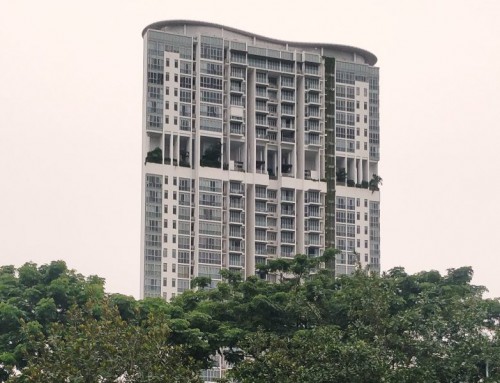On 28th June 2013, the Singapore government introduced the Total Debt Servicing Ratio (TDSR) as part of a slew of cooling measures to try to rein in property prices. This measure was extremely effective as property prices started to reverse. Recently the government announced a slight easing of the TDSR for a selected group of people. Let us take a look at how an individual’s TDSR and Mortgage Servicing Ratio (MSR) are calculated.
Total Debt Servicing Ratio (TDSR)
TDSR was introduced on the 28th of June 2013 and it was to encourage financial prudence among borrowers. In a nutshell, it is a percentage of an individual’s income that can be used towards serving his debt obligations like home loans, car loans, credit card debts and personal loans. Here is the basic framework of the TDSR.
1) Total Debt Servicing Ratio set at 60%
The total amount of debt which you can undertake is capped at 60% of your income. For example, if your income is $10,000 a month, the total value of your monthly instalments cannot exceed $6,000. This is significant as now financial institutions will be required to check whether a borrower has other financial obligations before lending him money. If a borrower has $2,000 worth of monthly instalments (perhaps car loan and credit card debt), then he can only take a home loan with a monthly installment of $4,000 a month.
2) 30% haircut on variable and rental income
- Commission from sales: Commission agents like property and insurance agents’ incomes will be subjected to this 30% haircut. Thus only 70% of a declared annual income of $10,000 a month will be considered. Eventually, this commission agent can only use 60% of $7,000 to service his debt. This haircut also applies to the commission portion of any fixed salaried individual.
- Rental income: Rental incomes with stamped tenancy with remaining rental period of at least 6 months will be subjected to this 30% haircut. Thus only 70% of a $5,000 rental income will be considered.
- Monthly bonus
- Income from part-time and freelance work
3) Interest rate of 3.5% and 4.5% used for stress test
Current home loan interest rates are hovering around 1-2%. This may cause a false sense of affordability to some borrowers. The additional debt that the home buyer will be undertaking when he purchases a property will be based on either 3.5% for residential properties or 4.5% for non-residential properties.
4) Income weighted average age
In the past, home loan tenures were based on the age of the younger borrower. Some older applicants, in their 50s, could take a home loan with a very long tenure by purchasing a property with a younger individual, usually their children. This Income weighted average age takes into account the income and ages of both borrowers when determining the loan tenure of a mortgage.
Income Weighted Average Age (IWAA) = [(Age of borrower A x Income of borrower A) + (Age of borrower B x Income of borrower B)] / (Income of borrower A + Income of borrower B)
5) Guarantors are considered as joint borrowers
In the past, some individuals could help a home buyer by placing his name as a guarantor to a mortgage to increase the home loan amount. However, guarantors who do this under the new framework will see their own TDSR affected as this loan will add to their debt servicing ratio.
6) Value of financial assets subjected to haircut
Come individuals depend on their existing financial assets like paid up properties, stocks and bonds to be considered for Asset-Based Lending with the banks. These assets will be subjected to a haircut of up to 70% based on their asset type and pledged status. This affects individuals like retirees and high net worth individuals as these assets are valued lesser and thus they cannot borrow as much as before.
7) More stringent application process
The financial institutions have to collect more documents and run more stringent financial background checks on borrowers.
So what changed recently?
On the 10th of March 2017, the Singapore Government announced that the TDSR will not apply to mortgage equity withdrawal loans with loan-to-value ratios of 50 percent or lower. These refer to loans whereby borrowers borrow against the value of their properties to obtain more cash. For example, if a property is valued at $2,000,000 and is fully paid, the homeowner could remortgage the property up to $1,000,000, ie. 50% of the value of the property. If there is an outstanding loan of $500,000 on the property, the homeowner could remortgage another additional $500,000. If the outstanding loan is more than $1,000,000, ie more than 50% of the value of the property, then this homeowner cannot apply for a mortgage equity withdrawal loan.
Mortgage Servicing Ratio (MSR)
Mortgage servicing ratio affects loans for HDB flats and Executive Condominiums (EC). The current MSR is set at 30%. This means that only 30% of a borrower’s income can be used to service the mortgage on the HDB or EC.
The maximum loan tenure for HDB loans is 25 years and 30 years for EC home loans.
MSR does not apply to the refinancing of loans for HDB flats and ECs that are owner-occupied and that were purchased before 12th January 2013 (for HDB flats) and 10th December 2013 (for ECs purchased from a developer).
Yours Sincerely,






